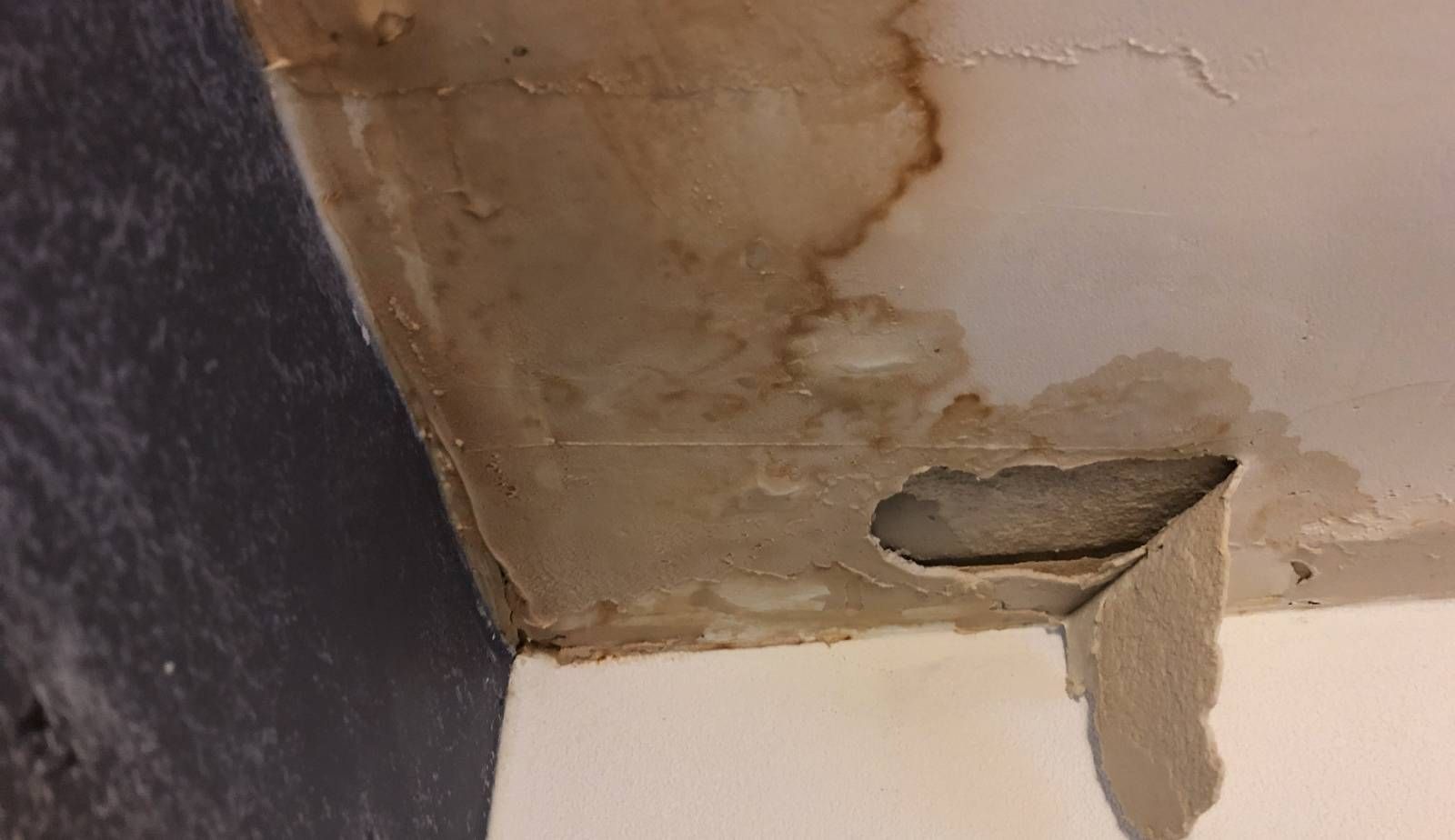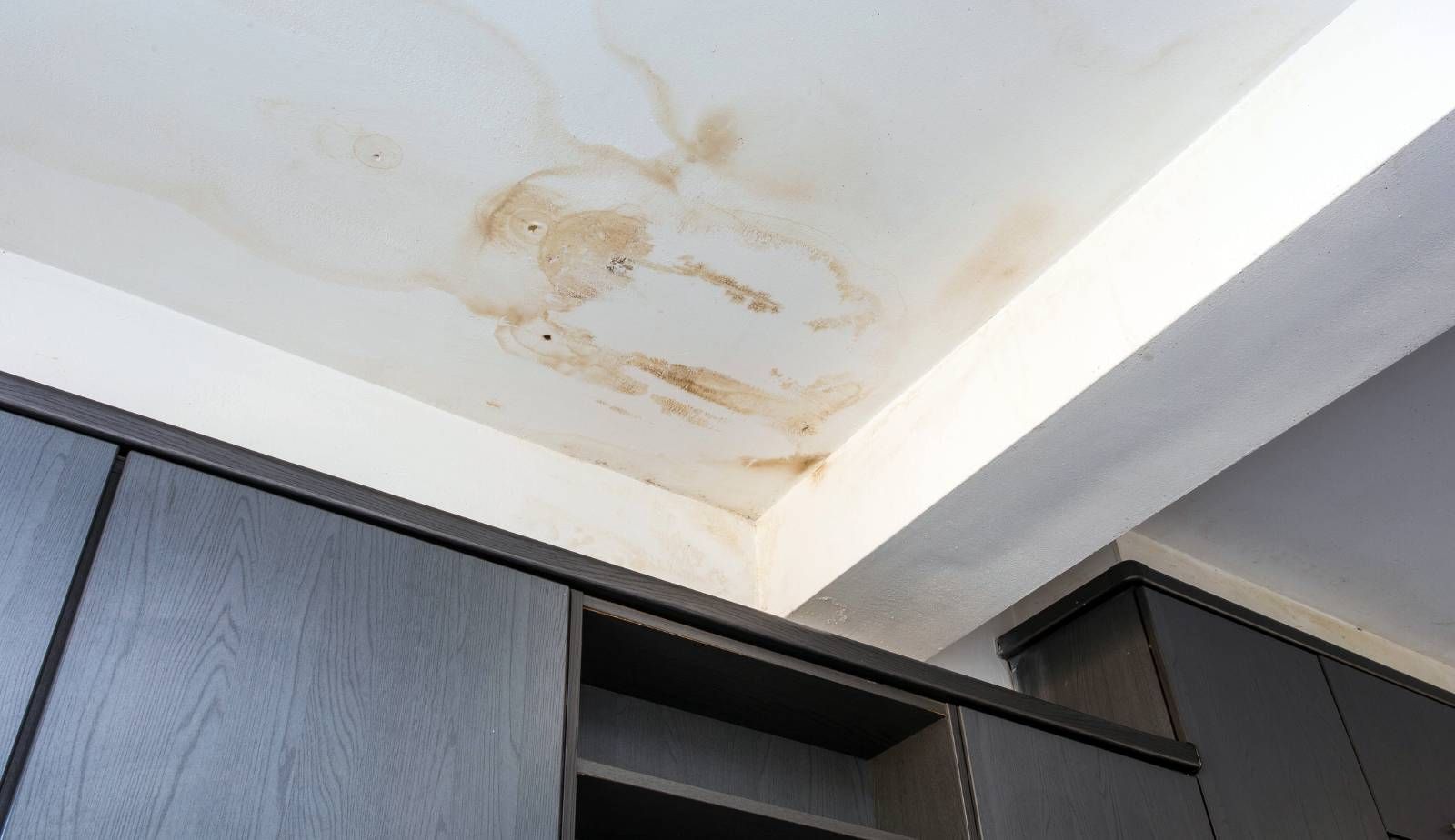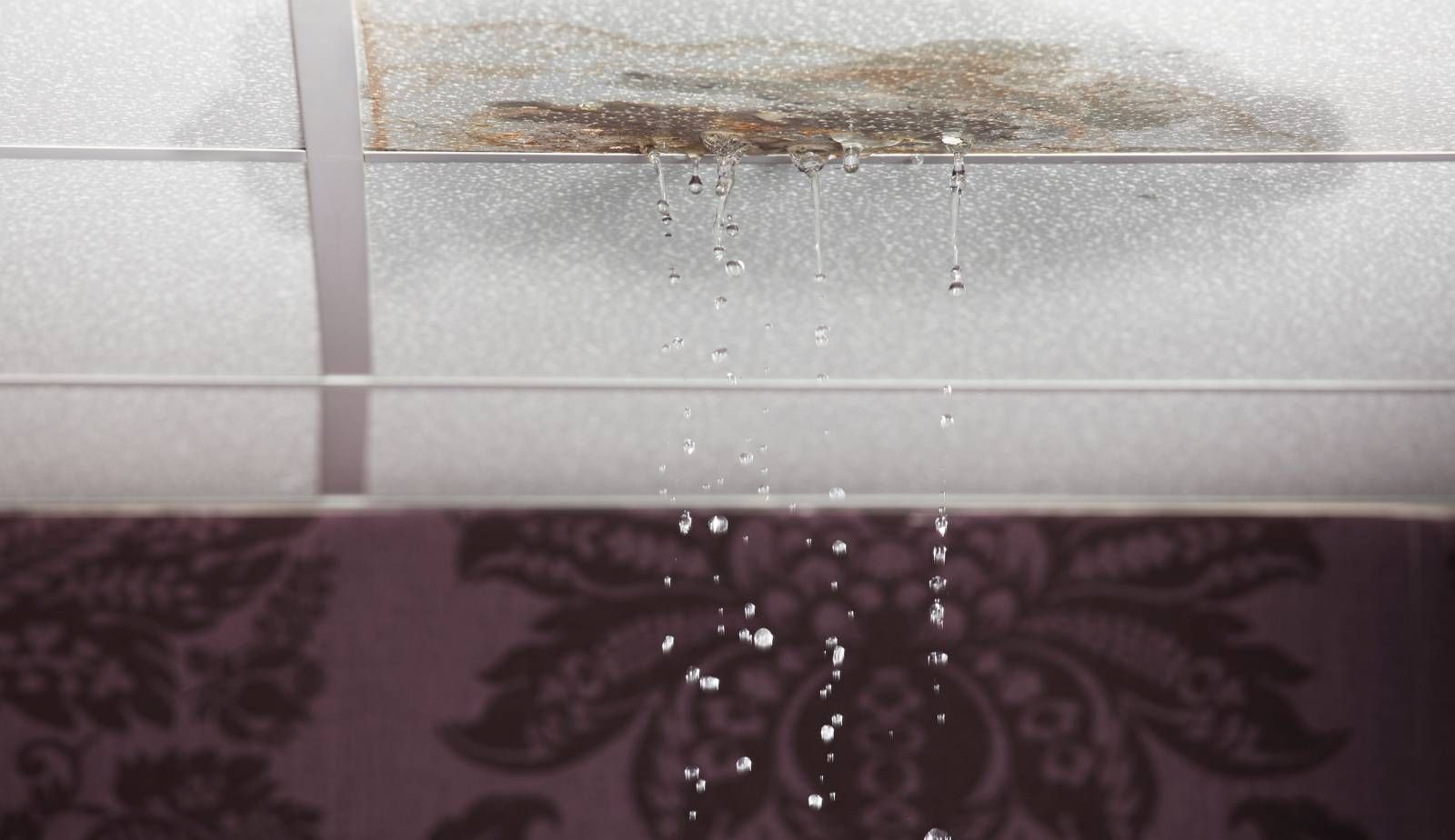How Roof Leaks in Louisiana Can Lead to Extensive Damage and Mold Growth: Tips on Proactive Prevention from Drymax
Roof leaks in Louisiana can result in significant damage to homes, often leading to costly repairs. The combination of high humidity and frequent rain creates an ideal environment for mold growth when water seeps into a building's structure. Addressing roof leaks promptly is crucial to prevent extensive damage and maintain a healthy living environment.
Residents of Louisiana face unique challenges due to the state's climate. If leaks are ignored, they can lead to compromised structural integrity, increased repair costs, and health risks associated with mold exposure. Proactive measures, such as regular roof inspections and maintaining gutters, can help mitigate these issues.
Preventing mold growth requires vigilance and proper maintenance. Homeowners should prioritize timely repairs and regularly check for signs of water intrusion, especially after heavy rainfall. Implementing these strategies can significantly reduce the risk of severe damage, ensuring a safe and secure home. For more insights, explore tips on proactive measures from DryMax.
How Roof Leaks Occur in Louisiana
Roof leaks in Louisiana can arise from various factors, significantly impacting the integrity of homes. Understanding these causes is essential for effective prevention and maintenance.
Common Causes of Roof Leaks
Several common issues lead to roof leaks in Louisiana.
- Damaged Shingles: High winds and heavy rain can dislodge or break shingles, creating openings for water.
- Flashing Failures: Flashing is vital for waterproofing areas where the roof meets vents and chimneys. Deteriorated or improperly installed flashing can lead to leaks.
- Clogged Gutters: Blockages prevent water from draining properly, resulting in overflow and potential water damage to roofing materials.
- Ice Dams: While less frequent in Louisiana, any accumulation of ice can cause problems by trapping water against the roof.
Each of these issues can create pathways for water intrusion if not addressed promptly.
Impact of Louisiana’s Climate on Roof Integrity
Louisiana’s climate presents unique challenges that can compromise roof integrity. The combination of high humidity and frequent rain creates an environment conducive to mold and mildew growth.
- Humidity: Constant moisture leads to rot and deterioration of roofing materials.
- Heavy Rainfall: Intense storms can overwhelm roofing systems, leading to leaks and structural issues.
- Temperature Fluctuations: Extreme heat followed by sudden cool spells can cause materials to expand and contract, leading to cracks and vulnerabilities.
These climatic factors necessitate proactive maintenance to ensure roofs remain watertight and effective.
Warning Signs of Roof Problems
It is crucial to recognize early warning signs of potential roof problems.
- Stains on Ceilings or Walls: These often indicate water intrusion that can lead to severe mold issues.
- Missing Shingles: A visible absence of shingles can be an immediate sign of vulnerability.
- Leaks During Rain: Any dripping from the ceiling during a rainstorm is a clear indication that a leak is present.
- Visible Mold: The presence of mold inside the home is not just a sign of moisture but also can lead to health risks.
Identifying these signs early allows homeowners to address issues before they escalate into more costly repairs.

The Dangers of Roof Leaks
Roof leaks can arise from various sources, including poor installation, aging shingles, or storm damage. These leaks pose significant risks that can escalate quickly if not addressed. Understanding the dangers associated with roof leaks is essential for any homeowner.
Structural Damage to Homes
Water intrusion from roof leaks can lead to severe structural issues. As moisture seeps into the framing, it can weaken the integrity of beams, rafters, and other supporting structures. Over time, this degradation increases the risk of roof collapse, which is a significant safety hazard.
In addition to framing concerns, leaks can cause damage to drywall and insulation. When water penetrates these materials, it compromises their effectiveness. Homeowners may face costly repairs and potential safety risks if the leaks are not dealt with promptly.
Electrical Hazards Caused by Water Intrusion
Roof leaks can create dangerous electrical hazards within a home. Water can travel along wiring and outlets, increasing the risk of electrical shorts or fires. This scenario is particularly worrisome in areas where electrical systems are not adequately protected against moisture.
Homeowners must remain vigilant about the visibility of moisture around outlets or light fixtures. Identifying these issues early can prevent potentially life-threatening situations stemming from electrical failures that arise from water exposure.
Compromised Insulation and Energy Efficiency
Moisture from roof leaks can severely compromise insulation effectiveness. Insulation materials, when wet, lose their ability to regulate temperature. This loss can lead to increased energy costs as the heating and cooling systems work harder to maintain comfortable indoor conditions.
Furthermore, compromised insulation can lead to cold spots and drafts throughout the home. The energy inefficiency caused by leaks not only impacts comfort but also escalates utility bills, placing additional strain on homeowners' finances.
Addressing roof leaks promptly is crucial to minimizing these dangers. Homeowners should conduct regular inspections to identify issues early and ensure their roofs remain sound against Louisiana's unique climate challenges.
Roof Leaks and Mold Growth
Roof leaks in Louisiana pose significant risks for homeowners due to the state’s unique climate and environmental conditions. These leaks can lead to extensive damage and create ideal conditions for mold growth. Understanding the factors contributing to this issue is crucial for effective prevention.
Why Louisiana Homes Are Vulnerable to Mold
Louisiana’s humid subtropical climate creates an environment conducive to mold growth. The combination of high temperatures and consistent rainfall increases moisture levels in the air and within homes. Roof leaks exacerbate this situation by allowing water to infiltrate areas where mold can thrive.
Older homes with inadequate ventilation and insulation are particularly susceptible. Many roofs in Louisiana also face challenges from high winds and heavy storms that may compromise integrity. These factors align to create a perfect storm for mold proliferation.
Health Risks Associated With Mold
Mold poses serious health risks, particularly for individuals with allergies, asthma, or weakened immune systems. Exposure to mold spores can lead to respiratory issues, skin irritations, and other allergic reactions. Some species of mold can produce mycotoxins, which may be harmful if inhaled or ingested.
Children and the elderly are especially vulnerable to adverse health effects. Ensuring that homes are free from leaks and subsequent mold growth is essential for maintaining a safe living environment. Regular inspections can help identify problems before they escalate.
How Moisture Promotes Mold Proliferation
Moisture is a key factor that promotes mold growth. Mold spores are present in the air and require water to germinate and spread. When a roof leaks, water can accumulate in hidden areas, such as attics, walls, and ceilings.
Once moisture settles, mold can begin to grow in as little as 24 to 48 hours. Proper drainage systems and ventilation are vital in minimizing moist conditions. Homeowners are encouraged to use materials resistant to mold and moisture, which can help reduce the chances of mold development over time.

Long-Term Consequences of Unaddressed Roof Leaks
Unaddressed roof leaks can lead to significant structural and financial repercussions. The escalation of repair costs and the impact on property value are critical factors that homeowners should consider.
Escalating Repair Costs
When roof leaks go unnoticed or unaddressed, minor issues can develop into major repairs. Water intrusion can compromise roofing materials, insulation, and even the home's structural integrity.
For example, a small leak can cause mold to grow, which requires specialized remediation services. Mold removal costs can often range from $500 to $6,000, depending on severity.
In addition, damaged roofing components may lead to water seeping into walls and foundations. Repairing such damage can require extensive work, possibly costing thousands of dollars in structural repairs.
Timely interventions can mitigate costs significantly. Homeowners are encouraged to perform regular inspections to identify potential leaks before they become major issues.
Reduced Property Value
The presence of roof leaks can diminish a property's market value. Potential buyers may perceive a history of leaks as a red flag, leading to lower offers.
Moreover, homes with visible water damage can face significant appraisal reductions. This can translate into thousands of dollars in lost equity.
In Louisiana's humid climate, the risks of mold and mildew further complicate issues. Houses with mold problems often face extensive remediation, which can deter buyers.
In addition, insurance companies may increase premiums for properties with documented water damage. Regular maintenance and repairs can help maintain property value, protecting homeowners’ investments in the long run.
Proactive Roof Maintenance Strategies
Routine maintenance is essential for preventing roof leaks and subsequent damage. Consistent inspections and professional assessments play a crucial role in maintaining a healthy roof.
Routine Roof Inspections
Regular roof inspections are vital to identify potential issues before they escalate. Homeowners should conduct inspections at least twice a year, ideally in spring and fall.
During these inspections, attention should be paid to:
- Shingles: Look for missing, cracked, or curled shingles. These can allow water to penetrate.
- Flashing: Check around chimneys and vents for any deterioration.
- Gutters: Ensure gutters are free of debris to facilitate proper drainage.
If homeowners notice any irregularities, they should address them promptly. Ignoring these issues can lead to leaks, mold growth, and structural damage.
Importance of Professional Assessments
While DIY inspections are helpful, professional assessments offer a more comprehensive evaluation. Roofing professionals can identify hidden problems and provide necessary repairs.
They typically check for:
- Structural Integrity: A professional can evaluate the support beams and decking for any weakness.
- Ventilation Issues: Proper ventilation is crucial to prevent mold growth. An expert can recommend improvements.
- Life Expectancy: Understanding the remaining lifespan of the roof helps in planning replacement or major repairs.
Investing in a professional assessment every few years can save homeowners from costly repairs and protect their home from severe weather conditions.
Prevention and Early Intervention Tips From DRYMAX
To protect homes in Louisiana from extensive damage and mold growth caused by roof leaks, proactive measures are essential. Addressing minor issues as they arise, ensuring proper ventilation, using quality materials, and maintaining gutters can significantly reduce risks.
Addressing Minor Issues Promptly
Timely attention to minor roof defects can prevent larger problems. It is crucial to inspect roofs regularly for signs of damage, such as missing shingles, cracks, or any signs of wear. Small leaks, if left neglected, can lead to more extensive water damage and mold growth over time.
Homeowners should prioritize repairs, employing professional help when necessary. A routine checklist could include:
- Inspecting the roof after severe weather events
- Checking for missing or damaged shingles
- Searching for stains on ceilings or walls
By addressing these issues quickly, homeowners can save themselves from costly repairs in the future.
Proper Attic Ventilation Solutions
Proper attic ventilation is vital in maintaining indoor air quality and regulating humidity levels. In Louisiana, where humidity is often high, inadequate ventilation can trap moisture, creating an environment conducive to mold.
Homeowners should consider installing:
- Soffit vents: These allow air to enter from the eaves.
- Ridge vents: These let hot air escape from the top of the roof.
Using a balanced ventilation system promotes air circulation, reducing moisture accumulation. Regular inspections can ensure that vents are clear from debris and functioning optimally.
Using High-Quality Roofing Materials
Investing in high-quality roofing materials can significantly enhance a roof's durability and resistance to leaks. Materials such as architectural shingles, metal roofing, and tiles offer better protection against severe weather conditions common in Louisiana.
Homeowners should research materials that provide:
- High waterproof ratings
- Resistance to UV rays
- Longevity guarantees
Choosing roofs designed for local climates can minimize maintenance needs. Consulting with a professional roofing contractor can provide valuable insights into the best options tailored to specific home requirements.
Gutter Cleaning and Maintenance
Continuous gutter maintenance is vital for effective drainage. Clogged gutters can lead to water overflow, which can seep into the foundation or roof structure. Regular cleaning ensures that gutters function properly and direct water away from the home.
Homeowners should prioritize:
- Seasonal inspections: Checking gutters at least twice a year.
- Removing debris: Clearing leaves, twigs, and mud buildup.
Installing gutter guards can also help reduce debris accumulation, making maintenance easier. Keeping gutters clear not only protects against roof leaks but can also extend the life of the roof itself.
When to Seek Expert Help in Louisiana
Homeowners in Louisiana should be vigilant about the condition of their roofs. Recognizing the signs of a roof leak is essential to preventing further damage and mold growth.
Signs to Monitor:
- Water Stains: Visible stains on ceilings or walls indicate potential leaks.
- Mold Growth: The presence of mold on surfaces suggests ongoing moisture issues.
- Missing Shingles: Damaged or missing shingles can lead to leaks.
If homeowners notice any of these signs, it may be time to consult a professional.
Timing Is Crucial:
Waiting too long can lead to significant structural damage. Homeowners should seek expert help if:
- They are unsure about the source of a leak.
- They notice persistent moisture despite fixing visible issues.
- They observe significant mold growth.
Choosing a Professional:
Look for licensed and insured roofing contractors with experience in Louisiana’s climate. They should offer:
- Comprehensive inspections.
- Detailed repair estimates.
- Knowledge of local building codes.
Contacting experts promptly can save time and reduce repair costs. It's essential to act quickly to protect the home from extensive damage.

Frequently Asked Questions
Homeowners in Louisiana often face unique challenges due to the state's climate and weather patterns. Understanding these challenges can help prevent costly damage and mold growth caused by roof leaks.
What are the common causes of roof leaks in Louisiana's climate?
Roof leaks in Louisiana can stem from heavy rainfall, high humidity, and strong winds. Poor installation practices, aging roofs, and lack of maintenance also contribute. Flashing failure and blocked gutters can further exacerbate the issue, allowing water to penetrate and create leaks.
How quickly can water damage from a roof leak lead to mold growth in Louisiana homes?
Water damage can prompt mold growth within 24 to 48 hours in Louisiana's humid environment. High humidity levels create ideal conditions for mold spores to thrive. Prompt action is essential to mitigate both water damage and potential mold proliferation.
What steps can homeowners take to proactively prevent roof damage in areas prone to Louisiana's weather conditions?
Homeowners should perform regular roof maintenance, including inspections after storms. Cleaning gutters and downspouts helps ensure proper drainage. Additionally, applying water-resistant coatings can reduce the risk of leaks.
Can regular inspections prevent extensive roof damage, and what should these inspections look for?
Regular inspections can greatly reduce the risk of extensive damage. An inspection should focus on identifying missing or damaged shingles, checking flashing, and ensuring gutters are clear. Professional evaluations can detect underlying issues not visible to the untrained eye.
What are the best materials and construction practices for preventing roof leaks in Louisiana?
Using materials resistant to moisture, such as architectural shingles and metal roofing, can help minimize leaks. Proper installation techniques, including flashing around chimneys and vents, are crucial. Additionally, ensuring adequate ventilation in the attic can reduce humidity levels.
What immediate actions should be taken upon discovering a leak to minimize damage and prevent mold growth?
Upon discovering a leak, homeowners should contain the water by placing buckets or towels under the affected area. It's crucial to contact a professional to assess the damage and perform necessary repairs quickly. Removing wet materials and promoting ventilation can help prevent mold growth.
You might also like
DryMax Restoration Blogs




